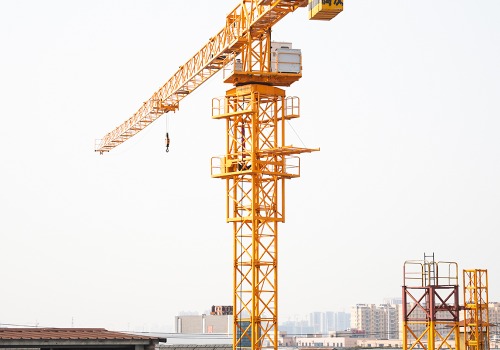
Understanding Your Project Requirements
Assessing Project Scope and Scale
Before selecting any machinery, it's crucial to understand the specific requirements of your project. This involves defining the project's goals and objectives, estimating its size and timeline, and determining the types of equipment necessary to complete the tasks efficiently.
- Define project goals and objectives: Clearly outline what you aim to achieve, such as excavation, grading, or material handling.
- Estimate project size and timeline: Determine the scale of the project and the expected duration to plan equipment usage accordingly.
- Determine necessary equipment types: Based on the tasks at hand, identify the machinery required, such as excavators, backhoes, or loaders.
Evaluating Site Conditions
The conditions of the construction site play a significant role in selecting the appropriate machinery. Factors like terrain, soil types, weather conditions, and space constraints can influence equipment performance and efficiency.
- Analyze terrain and soil types: Assess whether the ground is rocky, sandy, or clayey, as this affects equipment choice.
- Consider weather and environmental factors: Extreme weather conditions can impact machinery operation and maintenance needs.
- Assess space constraints and accessibility: Ensure that the equipment can maneuver within the site without obstructions.
Selecting the Appropriate Machinery
Types of Heavy Construction Equipment
Understanding the different types of heavy construction equipment is essential to match the right machinery to your project's needs.
- Excavators: Ideal for digging, trenching, and material handling tasks.
- Backhoes: Versatile machines suitable for digging, lifting, and transporting materials.
- Loaders: Used for loading materials into trucks or onto conveyors.
- Bulldozers: Effective for grading, clearing, and moving large quantities of material.
Matching Equipment to Project Needs
It's essential to align the equipment's capabilities with the specific tasks required in your project.
- Excavators for digging and trenching: Their powerful arms and buckets make them suitable for deep digging tasks.
- Backhoes for versatile tasks: With a bucket at the front and a hoe at the back, backhoes can perform multiple functions.
- Loaders for material handling: Loaders can move large volumes of material quickly and efficiently.
- Bulldozers for grading and clearing: Their heavy blades are perfect for leveling and clearing land.
Budgeting and Cost Considerations
Estimating Equipment Costs
Understanding the costs associated with machinery is vital for budgeting purposes. This includes the initial purchase or rental price, maintenance expenses, fuel consumption, and transportation costs.
- Purchase vs. rental analysis: Evaluate whether buying or renting equipment is more cost-effective based on project duration and frequency of use.
- Maintenance and operational costs: Regular maintenance ensures machinery longevity and reduces unexpected breakdowns.
- Insurance and transportation expenses: Factor in the costs of insuring the equipment and transporting it to and from the site.
Maximizing Cost-Efficiency
Implementing strategies to maximize cost-efficiency can lead to significant savings over the project's duration.
- Choosing fuel-efficient models: Select equipment that offers better fuel economy to reduce operational costs.
- Implementing regular maintenance schedules: Regular servicing can prevent costly repairs and downtime.
- Training operators for optimal performance: Skilled operators can handle machinery more efficiently, reducing wear and tear.
Operator Skills and Safety
Assessing Operator Qualifications
Ensuring that operators are adequately trained and certified is crucial for both safety and efficiency.
- Required certifications and training: Operators should possess the necessary certifications for the specific machinery they operate.
- Experience with specific equipment types: Experience ensures that operators can handle machinery competently.
- Understanding of safety protocols: Knowledge of safety procedures reduces the risk of accidents on-site.
Ensuring Workplace Safety
Maintaining a safe work environment is paramount to prevent accidents and ensure smooth project execution.
- Implementing safety training programs: Regular training sessions keep safety protocols fresh in operators' minds.
- Conducting regular safety audits: Audits help identify potential hazards and mitigate risks.
- Providing appropriate personal protective equipment (PPE): PPE protects workers from potential injuries and hazards.
FAQ
What are the benefits of renting large construction machinery?
Renting allows flexibility, reduces upfront costs, and eliminates maintenance responsibilities. It's ideal for short-term projects or when specialized equipment is needed temporarily.
How do I determine the right size of equipment for my project?
Consider the project's scale, the volume of material to be moved, and site constraints. Consulting with equipment suppliers can provide insights into the appropriate machinery size.
What are the latest technological advancements in construction machinery?
Modern machinery features GPS tracking, telematics for remote monitoring, and autonomous operation capabilities, enhancing efficiency and safety on-site.
How can I reduce downtime caused by equipment failure?
Implementing regular maintenance schedules, training operators, and using quality parts can minimize the risk of unexpected breakdowns.
What are the environmental considerations when choosing construction equipment?
Opting for fuel-efficient models, considering electric or hybrid options, and adhering to emission standards can reduce the environmental impact of construction activities.





 English
English русский
русский Español
Español 中文简体
中文简体

















